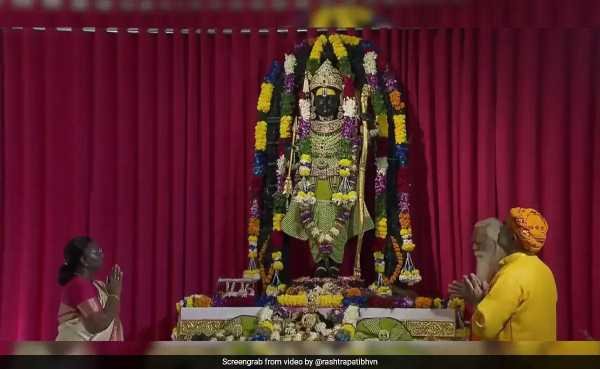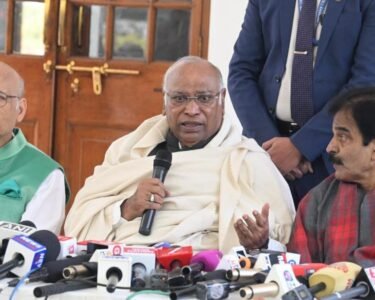President Droupadi Murmu visited the Ram Mandir, where she offered prayers and conducted an aarti in front of the idol of Ram Lalla while mantras were recited on Wednesday. This visit followed Shri Ram Janmabhoomi Teerth Kshetra Trust general secretary Champat Rai’s dismissal of the claim by Congress MP Rahul Gandhi that the President had not been invited to the temple consecration because she is tribal. Subsequently, the President’s official ‘X’ account referred to the temple as “a reflection of our society’s cultural values.”
‘President Granted Access to Priest-Only Area’
Shri Ram Janmabhoomi Teerth Kshetra Trust general secretary Champat Rai called Rahul’s statement “entirely false, groundless, and misleading” and emphasized that the President was indeed invited to the January 22 ceremony.
Following Murmu’s visit—her first to the newly constructed Ram temple—the Trust released a statement asserting that it had provided an appropriate response to those claiming she was not invited to the consecration ceremony. “As part of a special arrangement, the President had the chance to stand beside the idol within the sanctum sanctorum, an area typically reserved for priests and where the prime minister was present during the consecration,” the Trust stated.
Following the visit to Ayodhya, a post on the President of India’s official ‘X’ account quoted her reflecting on Lord Ram’s interactions with Kewat and Shabri, two legendary figures from the Ramayan who were part of the MBC and tribal communities, respectively.
President Droupadi Murmu Reflects on Ayodhya Visit and Ram Temple
- Moving Experience: Murmu expressed an inability to fully convey her emotions after witnessing Ram Lalla’s majestic presence at the Ram temple.
- Memorable Moments: She reminisced about impactful scenes such as Lord Ram’s conversation with Kewat and Shabri’s interaction with him, emphasizing the emotional depth of these stories.
- Cultural Significance: Murmu described the Ram temple as a representation of the cultural values that inspire everyone to contribute to society’s greater good.
- Gratitude for Progress: Murmu stated that in this era, it is a privilege to be part of the nation’s comprehensive development and advancement.







